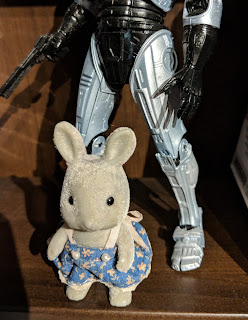The Blue Fairy Book
The Blue Fairy Book
Edited by Andrew Lang, 1886
Edited by Andrew Lang, 1886
Another free Fairy Tale collection this week. The Blue Fairy Book is one of the earliest collections of fairy tales in English. Andrew Lang and his staff collected, translated, and edited fairy tales into twelve collections, but the Blue Fairy is first. He had good taste.
The stories in this collection have an amazing range, and Lang is good enough to cite his source for almost all of his tales. There are 37 stories total, including six selections from Grimm, five from Perrault, a couple Scots tales (in dialect, sort of), a few British traditionals, three from the Arabian Nights, the part of Gulliver's Travels about Lilliput, and a full retelling of the Perseus myth with different names. It's almost overwhelming.
A few of them are really unique ones.
“The History of Whittington” is a British rags-to-riches folk tale based vaguely on an actual historical figure. It's interesting to me because of its dips into a modern sensibility, and its occasional meta commentary.
Whittington answered that he should be glad to work if anybody would employ him, and that he should be able if he could get some victuals to eat, for he had had nothing for three days, and he was a poor country boy, and knew nobody, and nobody would employ him.... People are too apt to reproach those who beg with being idle, but give themselves no concern to put them in the way of getting business to do, or considering whether they are able to do it, which is not charity.
It is not our business to animadvert upon these lines; we are not critics, but historians. It is sufficient for us that they are the words of Mr. Fitzwarren; and though it is beside our purpose, and perhaps not in our power to prove him a good poet, we shall soon convince the reader that he was a good man.
“The History of Jack The Giant-Killer” reads much like other Celtic and Arthurian tales I've read: it's full of random violence, there's a lot of “and then this happened” and no “and this is why.”
Jack, having hitherto been successful in all his undertakings, resolved not to be idle in future; he therefore furnished himself with a horse, a cap of knowledge, a sword of sharpness, shoes of swiftness, and an invisible coat, the better to perform the wonderful enterprises that lay before him.
“The Red Etin” is interesting for being half dialect and half explanation by the translator.
The young man then went on his journey; and he had not gone far when he espied an old man with white locks herding a flock of swine; and he gaed up to him and asked whose swine these were, when the man answered:
"The Red Etin of Ireland"—
(Repeat the verses above.)
Edited for children, some of the stories are not gory in places I expect them to be gory, but the text is matter-of-fact about death and dismemberment in others. I find this fascinating, especially learning that the version of Cinderella in this collection is the one by Perrault, which in print must have predated the Grimm version (which I'm more familiar with) by at least one hundred years. Just a hint: Perrault's doesn't involve maiming in the denouement.
Perhaps due to the editing, or just due to translation quirks, there are many amusing turns of phrase, especially in some of the more familiar stories.
Cinderella:
Her godmother, who saw her all in tears, asked her what was the matter.Sleeping Beauty:
"I wish I could—I wish I could—"; she was not able to speak the rest, being interrupted by her tears and sobbing.
This godmother of hers, who was a fairy, said to her, "Thou wishest thou couldst go to the ball; is it not so?"
The good Fairy who had saved her life by condemning her to sleep a hundred years was in the kingdom of Matakin, twelve thousand leagues off, when this accident befell the Princess; but she was instantly informed of it by a little dwarf, who had boots of seven leagues, that is, boots with which he could tread over seven leagues of ground in one stride. The Fairy came away immediately, and she arrived, about an hour after, in a fiery chariot drawn by dragons.A few times I ran across outright errors, though I can't say for certain when they were introduced, in Lang's translation, transcription, printing, Project Gutenberg's transcription... The oddest was that the setting of “Aladdin and the Wonderful Lamp” changes from “Persia” to “China” half-way through.
Across thirty-seven stories there are of course repetitive themes: the quest of the youngest son/daughter, adventures, trapped princesses, transformed people, helpful animals, etc. etc.
A few even within this one collection, however, have signs of possibly being the same story at some point in their evolution.
For example, there are strong parallels between the grand “East of the Sun and West of the Moon” and “The Black Bull of Norroway” (though the latter is much less coherent).
“The Wonderful Sheep” is “Snow White” and “Beauty and The Beast” in one long meandering tale. “Snow White” is not otherwise in this collection, although both “Beauty and the Beast”, and “Snow White and Rose Red” are.
“The White Cat” is very similar to “The Story of Prince Ahmed and The Fairy Paribanou.”
I enjoyed reading through this collection, especially since many of the stories were ones I am less familiar with. It was a long collection, though, and Lang completed 12 collections of Fairy Stories, all of which are free online. I...am not going to try to read them all now.
4 Stars – A Really Good Book



Comments
Post a Comment
FYI: Most comments are moderated, and will not appear immediately.